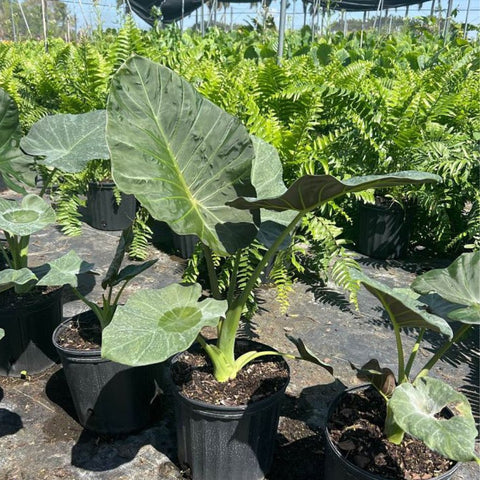Introduction
As spring unfolds its vibrant cloak, the world comes alive with flourishing plants and blooming flowers. But have you ever wondered what differentiates a thriving garden from those that seem stagnant and sparse? The secret often lies beneath the soil—in the nurturing power of fertilization. Fertilizing plants in spring is essential to invigorating growth, enriching plant health, and achieving a garden teeming with life. In this guide, we'll delve into the science of plant nutrients, explore the best fertilization methods for spring, and highlight how you can cultivate your verdant paradise with the help of Plantology's premium products.

Understanding Plant Nutrient Needs
Overview of Plant Nutrients
Plants, much like humans, require a balanced diet to maintain optimal health and support growth. This diet primarily consists of various essential nutrients necessary to carry out metabolic functions, form structural components, and thrive throughout their life cycles.
Macro vs. Micronutrients
In the realm of plant nutrition, nutrients are typically categorized into two groups: macronutrients and micronutrients. Both play vital roles, but they differ in the quantity needed by plants and their specific functions.
Essential Macronutrients
Macronutrients are required in larger amounts and are critical for fundamental plant growth processes. There are six key macronutrients essential for plant development:
- Nitrogen (N): Vital for leaf and stem growth, nitrogen is a major component of chlorophyll, the compound plants use in photosynthesis.
- Phosphorus (P): Crucial for energy transfer and storage, phosphorus is a key player in root development and flower/fruit production.
- Potassium (K): Known for enhancing disease resistance and improving overall plant vigor, potassium regulates water and nutrient movement within the plant.
- Calcium (Ca): Essential for cell wall structure, calcium facilitates enzyme activity and nutrient transport.
- Magnesium (Mg): A core element of chlorophyll, magnesium is pivotal in photosynthesis and enzyme activation.
-
Sulfur (S): Important for protein synthesis, sulfur influences amino acid formulation and plant metabolism.

Micronutrients and Their Roles
Micronutrients are needed in smaller amounts but are no less crucial than macronutrients. These include iron, manganese, zinc, copper, molybdenum, boron, and chlorine. Each plays a specialized role, from aiding enzyme function to establishing disease resistance, ensuring plants grow strong and resilient throughout the seasons.
Why Fertilizing in Spring is Essential
Spring: A Season of Renewal
Spring is synonymous with rebirth and renewal. It is during this period that plants awaken from winter dormancy, ready to absorb nutrients necessary for robust growth. The practice of fertilizing in spring directly supports this surge of activity, supplying essential nutrients that fuel healthy development and ward off potential deficiencies.
Boosting Plant Health
Regular spring fertilization is proven to enhance plant resistance to pests and diseases, encourage lush foliage, and promote abundant flowering. It ensures that your garden not only survives but thrives, offering a dynamic display of vibrant colors and vigorous growth.
Selecting the Right Fertilizers for Spring
Types of Fertilizers
When choosing fertilizers for your plants, you'll encounter several formulations, each suited to different needs and preferences:
- Granular Fertilizers: These are slow-release options that can provide nutrients over time, ideal for long-term nourishment.
-
Liquid Fertilizers: Offering quick results, liquid fertilizers are absorbed rapidly through roots and leaves, giving plants an immediate boost.

- Organic Fertilizers: Derived from natural sources, organic fertilizers are eco-friendly and promote soil health while providing balanced nutrition.
- Synthetic Fertilizers: Chemically engineered, these offer precise nutrient formulations to meet specific plant needs efficiently.
Matching Fertilizer to Your Plants
Not all plants have the same nutrient requirements. Tailoring your fertilization strategy according to plant type ensures optimal results:
- Flowering Plants: Require high phosphorus content to support abundant blossoming. Explore options like our Agapanthus Lily of the Nile for remarkable blooms.
- Foliage Plants: Benefit from nitrogen-rich fertilizers that stimulate vibrant leaf growth. Check out our diverse selection of Aglaonema Silver Bay to enhance your indoor greenery.
- Outdoor Trees: Opt for balanced fertilizers with adequate micronutrient content. See our range of palms like the Alexander Palm, which thrives with proper nutrition.
Application Techniques for Optimal Results
Soil Testing and Preparation
Before applying fertilizer, testing your soil is paramount. A soil test helps identify nutrient deficiencies and guides you in choosing the correct fertilizer. Once deficiencies are known, you can amend the soil accordingly, ensuring your plants receive precisely what they need.
Proper Timing and Frequency
Timing is everything in spring fertilization. Aim to fertilize when plants show first signs of new growth, usually once temperatures are stable and frost risk is minimal. Additionally, adhering to specific fertilization schedules for each type of plant is beneficial:

- Trees and Shrubs: Fertilize in early spring and possibly again in late spring or early summer.
- Annuals and Perennials: Feed lightly every four to six weeks during the growing season.
- Container Plants: Require more frequent feeding, typically every two to four weeks.
Common Mistakes in Fertilizing and How to Avoid Them
Even seasoned gardeners can make fertilizing errors. Avoid these pitfalls for healthier plants:
- Over-fertilizing: Can lead to nutrient burn and weakened plants. Always follow recommended rates and err on the side of caution.
- Incomplete watering: Fertilizer needs to be watered in thoroughly to prevent root damage and ensure uptake.
- Ignoring soil pH: Misaligned soil pH can render nutrients inaccessible. Proper adjustments ensure nutrients are available.
Sustainable Fertilizing Practices
Embracing Organic and Eco-friendly Fertilizers
As a green thumb advocate, opting for organic fertilizers can significantly contribute to sustainable gardening. These fertilizers improve soil health and minimize environmental impact compared to their synthetic counterparts.
Conserving Resources and Reducing Waste
Incorporating mulching and composting practices not only recycles garden waste but also enriches soil fertility naturally. Consider using Plantology's sustainable options to support your endeavor towards an eco-friendly garden.

Recommended Plantology Products for Spring Fertilizing
Discover Plantology’s range of carefully curated plants and trees that are perfect for your spring garden:
- Adonidia Palm Double: Known for its elegant appearance, this palm requires balanced nutrients for its majestic growth.
- Agave Blue: A striking succulent that thrives with minimal care, ideal for low-maintenance gardens.
Explore more of our offerings at Plantology for plants expertly nurtured and suitable for every gardener, from novice to pro.
Conclusion
Maximizing your garden's potential begins with understanding and catering to your plants' nutritional needs. Embrace the seasonal chore of fertilizing in spring as an opportunity to invigorate your green space with health and vitality. With tailored fertilization strategies and quality products from Plantology, your garden will not only bloom but positively flourish.
Transform your spring gardening with our reliable and effective range of products. Step into a world where your plants are the picture of health through informed care and dedicated nourishment. Visit us at Plantology today to start your journey to a thriving garden.
Diving Deeper into Plant Nutrient Needs
Understanding Soil Health
One commonly overlooked aspect of plant health is soil quality. Healthy, nutrient-rich soil is the cornerstone of a thriving garden. Your soil isn't just a growing medium; it's a dynamic ecosystem teeming with life, from microbes to fungi, all of which contribute to nutrient cycling and availability. So, let’s unravel the intricacies of soil health and its vital role in plant nutrition.

The Role of Soil pH
The pH level of your soil is fundamental to nutrient availability. A pH scale runs from 0 to 14, with 7 being neutral. Most plants thrive in slightly acidic to neutral pH levels (6.0 to 7.0). Soil pH affects the chemical form of nutrients, thereby influencing their accessibility to plants. For example, acidic soils may lock up phosphorus, while alkaline soils could make iron and manganese unavailable. Regular soil testing helps monitor pH levels and guide necessary amendments, such as lime for acid soils or sulfur to lower pH.
The Importance of Soil Organic Matter
Soil organic matter, composed of decomposed plant and animal residue, is crucial for healthy soil. It enhances moisture retention, soil structure, and nutrient holding capacity, while serving as a reservoir of slowly released nutrients. Incorporating organic matter through composting or well-rotted manure improves soil fertility, fostering an environment where plant roots can thrive.
Microbial Diversity in Soil
Microorganisms play a silent but essential role in soil health. They decompose organic matter, fix atmospheric nitrogen, and break down complex compounds into forms usable by plants. Encouraging biodiversity by limiting chemical inputs and diversifying plant species bolsters this vital community, ultimately benefiting plant health and productivity.
Spring Fertilization Techniques Tailored to Different Environments
Urban Gardening: Maximizing Small Spaces
Urban gardening often involves working with limited space and possibly poorer quality soil. However, with charming innovation and smart techniques, you can cultivate a vibrant garden even in the heart of the city. Consider raised beds or container gardening to optimize growth. Using high-quality potting soil mixed with slow-release fertilizers, like our specialized mixes at Plantology, ensures efficient nutrient absorption and vigorous plant growth.

Perennial Gardens: Ensuring Longevity and Health
Perennial plants make for lasting, effortless beauty, returning year after year to grace your garden. Spring fertilization of perennials differs slightly as it needs to support ongoing growth without overstimulation. Opt for fertilizers with balanced NPK ratios and incorporate organic mulches that break down over time, releasing nutrients gradually while regulating soil temperature and moisture levels.
Water-Wise Gardens: A Sustainable Approach
In areas prone to drought or with limited water access, water-wise gardening is a sustainable practice. Consider xeriscaping with drought-tolerant plants such as succulents and native species. These often require minimal fertilization and benefit from organic soil amendments which improve water retention. Products like our Drought Tolerant Plant Mix are designed to provide the essential nutrients for such hardy plants while reducing the need for frequent watering.
Evolving Trends in Spring Fertilization
Precision Fertilization: The Role of Technology
Advancements in technology have propelled gardening into the era of precision fertilization. Soil sensors and smart irrigation systems allow gardeners to monitor soil moisture and nutrient levels, ensuring that plants receive exactly what they need. These systems can optimize fertilizer application schedules, reducing excess use and minimizing environmental impact. Adoption of these technologies can enhance efficiency and sustain the health of your garden over time.
Regenerative Agriculture Influences
The principles of regenerative agriculture, though traditionally associated with crop farming, are finding their place in gardening practices as well. This involves techniques that restore soil biodiversity and health, such as cover cropping, crop rotation, and reduced tillage. Applying these methods in a garden setting can improve soil structure and nutrient availability, aligning with an eco-minded approach to cultivation.

Exploring Novel Fertilizer Options
With growing awareness of sustainability, novel fertilizers derived from algae, biochar, and even waste reuse are gaining popularity. These innovative options intensify nutrient delivery while promoting sustainability. Though relatively new to the market, Plantology is already exploring some of these future-friendly options in our product line-up, aiming to offer green-thumbed enthusiasts the resources they need to support the planet.
Real-life Success Stories and Experiences
Case Study: Urban Rooftop Revival
On a rooftop in a bustling metropolis, the custodians of a small community garden were challenged by limited space and urban soil contamination. By employing container gardening with sub-irrigation systems and organic fertilizers from Plantology, the garden underwent a vibrant transformation. Lush tomatoes, fragrant herbs, and striking ornamental plants now thrive atop a once-neglected rooftop, an oasis amidst high-rise buildings.
Transformed Perennial Pathway
A homeowner in the suburbs envisioned a breath-taking perennial pathway leading to their front door. However, initial efforts faltered due to poor soil structure and drainage. Through soil testing, amendments with organic matter, and the strategic application of balanced fertilizers, a stunning tapestry of color and texture emerged, with delphiniums, yarrows, and echinaceas creating a dynamic and welcoming entryway.
Drought-Resilient Landscape in Arid Climate
Faced with an arid landscape and stringent watering restrictions, a gardener sought a vibrant, yet water-wise garden. By selecting drought-tolerant flora and employing SoilSaver from Plantology, the project became a resounding triumph. Drip irrigation minimized water use while targeted fertilization supported robust growth, resulting in a resilient garden that embodies sustainability without sacrificing beauty.

The Art of Balancing Fertilization and Other Care Practices
Complementary Care for Optimal Growth
While fertilization is crucial, it's not the only pillar of successful gardening. Synchronizing it with proper watering, pruning, pest management, and plant companion strategies enhances the overall health of your garden. Understanding the unique interactions each plant has with its environment enables you to craft an adaptive approach that meets their multifaceted needs without wastage or harm.
Pruning Practices that Enhance Nutrient Use
Pruning plays an instrumental role, not just in shaping plants but also in redirecting nutrients to healthier growth zones. Removing dead, diseased, or overgrown limbs opens up airflow, giving rise to fewer fungal issues and facilitating more efficient nutrient uptake. For ornamental trees and flowering shrubs, expert pruning translates to flourishing greenery that mirrors skilled nurturing.
Managing Pests with Nutrient-optimized Solutions
Well-nourished plants are naturally more resilient against pests and diseases. However, integrated pest management (IPM) strategies complement fertilization efforts. Employing beneficial insects, natural repellents, and barriers alongside a nutrient-rich regimen fosters a balanced ecosystem where pests are controlled without resorting to harsh chemicals.
Charting Your Own Fertilization Plan
Developing a Personalized Approach
Every garden is unique, reflecting variables such as climate, plant selection, and soil conditions. Charting a personalized fertilization plan involves understanding these elements and adapting your methods to optimize growth. Plantology offers support via expert consultations, equipping you with insights and recommended actions tailored to your specific circumstances.

Using Fertilizer Logs and Journals
Keeping track of fertilization schedules, soil amendments, and plant responses through journals or logs empowers you with invaluable data for future seasons. Documenting your gardening endeavors helps refine your techniques, predict planting nuances, and anticipate nutrient needs, thereby developing a more efficient and skillful practice over time.
Engagement with Community and Experts
Gardening is as much about community as it is about individual effort. Engage with local gardening clubs, workshops, or reach out to experts for learning and sharing experiences. Collective wisdom can lead to innovative ideas and creative solutions, enriching your gardening journey with communal knowledge and support.
The Future of Spring Fertilization: A Vision Forward
Integrating Advanced Science and Time-Tested Wisdom
The future of spring fertilization marries cutting-edge scientific research with the wisdom of age-old gardening practices. Innovations in nutrient engineering, biostimulants, and sustainable practices promise greener thumbs and heartier plants. These tools, combined with our ancestral understanding of the land and its rhythms, create a holistic approach to plant care.
Plantology's Commitment to A Greener Future
At Plantology, we're dedicated to advancing sustainable gardening through our product innovations and environmental stewardship. By optimizing nutrient delivery, enhancing soil health, and fostering community education, we aim to cultivate gardens that thrive without compromising the earth's ecological balance.

Conclusion: The Spring Fertilization Journey Continues
As






























Comments (0)
There are no comments for this article. Be the first one to leave a message!